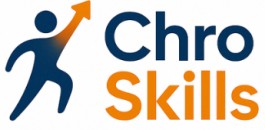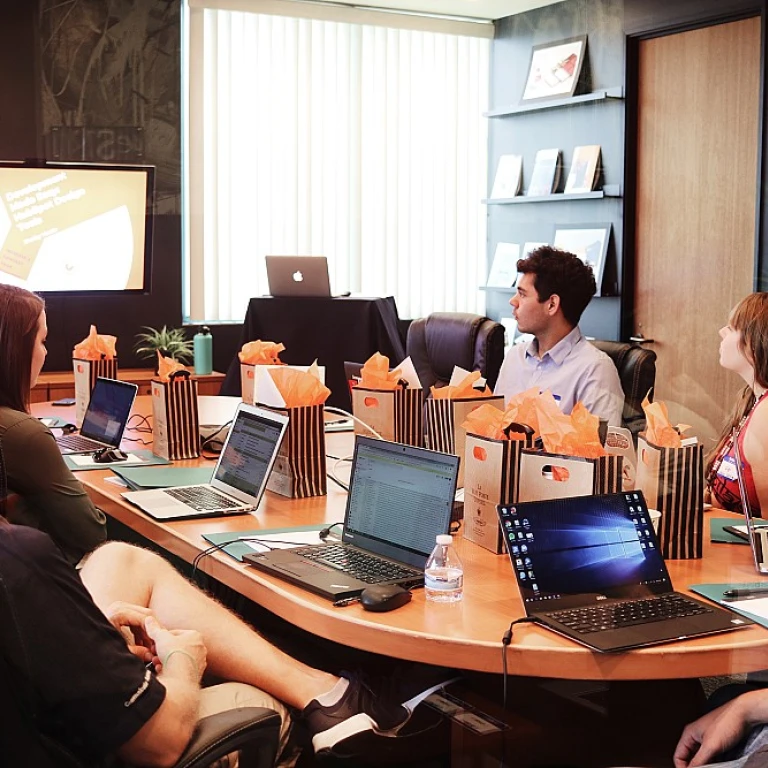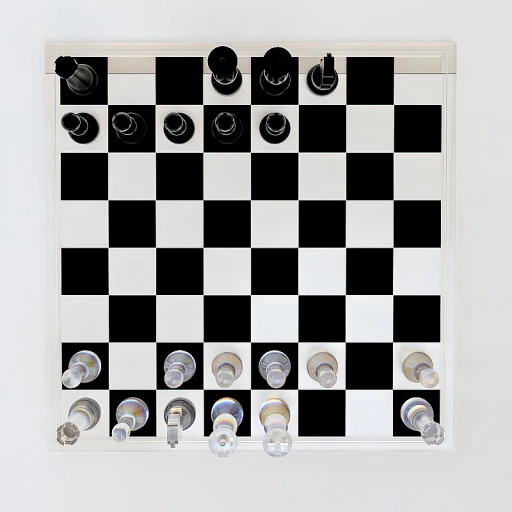
Understanding the Role of a Chief Human Resources Officer
Defining the Strategic Vision for Work Goals
The role of a Chief Human Resources Officer (CHRO) is multifaceted, involving strategic oversight of a range of HR functions. Among these, setting effective work goals is critical. As a CHRO, ensuring that goals align with the broader organizational objectives is paramount. This not only facilitates the coordination of team efforts but also boosts individual employee performance, ultimately driving the company’s success. As companies navigate the complex business landscape, CHROs help articulate what success looks like with clear, specific, and measurable goals. This requires proficiency in performance management systems, where the emphasis lies on developing SMART goals — Specific, Measurable, Achievable, Relevant, and Time-bound. By employing these frameworks, CHROs can set the stage for both performance goals and professional development. A successful CHRO understands that goal setting is not a one-off task; it is an ongoing process informed by continuous evaluation and feedback. Establishing goals that are aligned with organizational priorities requires a deep understanding of both the broader business strategy and the capabilities of individual team members. Such alignment fosters a collaborative work environment where employees are motivated to contribute towards shared objectives. Furthermore, CHROs play a pivotal role in facilitating communication and collaboration within teams. By setting clear objectives and reviewing goal examples, they encourage a dynamic workplace culture where employees understand their role in the larger organizational picture. This clarity supports effective performance reviews, where the focus is not just on assessing past performance but also on charting pathways for future growth. For additional strategies on enhancing the effectiveness of goal setting, explore this engaging link to workplace questions. Here, you’ll find creative ways to engage teams, driving both motivation and productivity in your HR initiatives.Key Skills for Setting Effective Work Goals
Core Competencies for Effective Goal Setting
Setting effective work goals requires a blend of both technical and interpersonal skills. Chief Human Resources Officers (CHROs) must be adept at developing specific, measurable, achievable, relevant, and time-bound (SMART) goals that align with the organization’s overarching objectives. Let's explore some key skills necessary for this task:
- Strategic Vision: Understanding the long-term direction of the company is crucial for creating goals that contribute to sustainable growth. CHROs must align performance goals with the company’s strategic objectives.
- Performance Management: Expertise in performance management allows CHROs to create clear and effective performance goals that enhance employee productivity and engagement. This involves regular performance reviews and adjustments based on feedback.
- Communication: Strong communication skills are essential for clearly conveying goals to employees and ensuring that team members understand how their individual objectives contribute to the company's success.
- Problem Solving: The ability to identify potential obstacles and develop solutions is essential for overcoming challenges in goal setting. This includes being proactive in addressing issues before they impact goal achievement.
- Time Management: Creating time-bound goals requires effective time management skills. CHROs must ensure that timelines are realistic yet challenging, promoting accountability and progress.
- Specific Measurable Objectives: Goals should be specific and measurable to track progress effectively. Being clear on what success looks like helps in conducting accurate performance evaluations.
The craftsmanship of goal setting is integral to a CHRO's responsibilities, blending strategic insights with practical application to enhance team performance and drive organizational success. For more insights on applying these skills in real-world settings, you may find engaging activities helpful in reinforcing these capabilities within your team.
Aligning Work Goals with Organizational Objectives
Integrating Organizational Objectives into Goal Setting
Aligning work goals with organizational objectives is a critical skill for any Chief Human Resources Officer (CHRO). This alignment ensures that every employee's efforts contribute directly to the company's broader mission and vision. By setting goals that are specific, measurable, achievable, relevant, and time-bound (SMART), CHROs can help employees understand how their individual performance impacts the organization as a whole.
Creating a Cohesive Strategy
To effectively align goals, CHROs must first have a deep understanding of the company's strategic objectives. This involves collaborating with other executives to ensure that the HR strategy supports the overall business plan. By doing so, CHROs can craft performance goals that not only enhance employee performance but also drive the company towards its long-term objectives.
Engaging Employees in the Goal-Setting Process
Involving employees in the goal-setting process is crucial for fostering engagement and commitment. When employees understand how their work contributes to the company’s success, they are more likely to be motivated and productive. CHROs can facilitate this by encouraging team members to participate in discussions about their goals and how these align with the company’s objectives.
Utilizing Metrics for Evaluation
Once goals are set, it is essential to establish metrics for evaluating progress. This involves setting specific, measurable criteria that will be used to assess performance during reviews. By providing clear examples of what success looks like, CHROs can help employees focus their efforts on achieving their goals. Regular performance reviews can then be used to provide feedback and adjust goals as necessary.
For more insights on aligning work goals with organizational objectives, consider exploring unlocking the potential of talent mobility in HR leadership.
Examples of Work Goals for Evaluation
Illustrative Objectives for Performance Evaluation
To aid in the evaluation of employee performance, it is imperative for Chief Human Resources Officers to set forth clear and specific examples of work goals. These objectives should align with both individual professional development and broader organizational aims.- Smart Goals: Crafting specific, measurable, achievable, relevant, and time-bound objectives allows for precise performance reviews. For instance, an employee’s goal could be to improve sales figures by 10% over the next quarter, which is both measurable and time-specific.
- Long-term Development: Encourage employees to pursue goals that foster long-term growth, such as acquiring new skills or certifications within a designated time frame. This supports not only personal development but also enhances the organization’s capabilities.
- Team-based Objectives: Setting collective goals promotes teamwork and helps align team members with shared objectives. An example might be completing a project that requires collaboration and multi-departmental involvement by a certain deadline.
- Problem-solving Skills: Employees can be encouraged to set goals aimed at solving a specific challenge within their department. This not only helps in personal skill enhancement but also drives innovation within the organization.
- Performance Management: Goals that revolve around improving performance management practices can be beneficial. For instance, enhancing employee performance review processes or introducing new metrics for better evaluation.
Evaluating Work Goals: Metrics and Feedback
Evaluating Goals through Metrics and Feedback
Evaluating work goals is a critical component of performance management, allowing the Chief Human Resources Officer to gauge the effectiveness of goal setting within the organization. Here are several essential factors to consider:- Measurable Metrics: Ensuring that goals are specific, measurable, achievable, relevant, and time-bound (SMART) enables the evaluation of employee performance through clear metrics. These criteria not only establish a foundation for objective assessment but also facilitate the tracking of progress over time.
- Regular Performance Reviews: Conducting regular performance reviews provides valuable insights into how well employees are meeting their objectives. These reviews serve as opportunities for supervisors and team members to discuss goal accomplishments and potential adjustments, thereby refining performance goals where needed.
- Feedback Mechanisms: Implementing structured feedback channels is paramount to goal evaluation. Feedback from peers, managers, and even self-assessments helps build a comprehensive understanding of goal attainment and highlights areas for improvement.
- Performance Goal Examples: Presenting clear examples of performance goals can serve as benchmarks for both employees and management. Goal examples act as guidelines for what successful goal achievement looks like and help steer employee development towards organizational objectives.
- Long-Term Objective Alignment: It's important to view the evaluation process in the context of long-term objectives. Aligning individual and team goals with broader organizational aspirations ensures continuity and relevance in the performance evaluation process.
Overcoming Challenges in Goal Setting and Evaluation
Addressing Common Obstacles in Goal Setting
Setting effective work goals is not without its challenges. Chief Human Resources Officers (CHROs) often face hurdles that can impede the goal-setting process. Understanding these obstacles is crucial for developing strategies to overcome them.
- Lack of Clarity: Goals must be specific and measurable to be effective. Ambiguity can lead to confusion and misalignment with organizational objectives. Ensuring that goals are clearly defined and communicated is essential.
- Time Constraints: Balancing short-term tasks with long-term objectives can be difficult. CHROs need to prioritize goals that align with both immediate needs and future aspirations, ensuring they are time-bound and achievable.
- Resistance to Change: Employees may resist new goals or changes in performance management processes. Engaging team members in the goal-setting process can help mitigate resistance and foster a culture of collaboration.
- Resource Limitations: Limited resources can hinder the achievement of goals. CHROs must be adept at resource management, ensuring that teams have the necessary tools and support to meet their objectives.
Strategies for Effective Goal Evaluation
Once goals are set, evaluating their effectiveness is key to ensuring continuous improvement. CHROs should employ a variety of metrics and feedback mechanisms to assess performance.
- Performance Reviews: Regular performance reviews provide an opportunity to assess progress and make necessary adjustments. These reviews should focus on both individual and team performance, offering constructive feedback.
- SMART Goals: Utilizing SMART criteria (Specific, Measurable, Achievable, Relevant, Time-bound) can help in setting clear and attainable goals. This approach ensures that goals are aligned with organizational objectives and are realistic.
- Feedback Loops: Establishing continuous feedback loops allows for real-time adjustments and fosters a culture of open communication. This helps in identifying potential issues early and addressing them promptly.
Enhancing Problem-Solving Skills
CHROs must be adept at problem-solving to navigate the complexities of goal setting and evaluation. Developing these skills can significantly enhance the effectiveness of performance management processes.
- Analytical Thinking: Analyzing data and trends can provide insights into potential challenges and opportunities. This skill is crucial for making informed decisions and setting realistic goals.
- Collaboration: Working closely with team members and other departments can lead to more comprehensive solutions. Collaborative efforts often result in more innovative and effective goal-setting strategies.
- Continuous Learning: Staying updated with industry trends and best practices can enhance a CHRO's ability to set and evaluate goals effectively. Professional development opportunities can provide valuable insights and skills.













